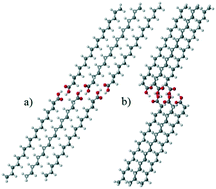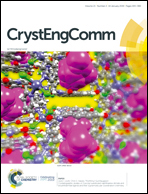Understanding the effect of solvent polarity on the polymorphism of octadecanoic acid through spectroscopic techniques and DFT calculations
Abstract
In this work, the polymorphism of octadecanoic acid (C18H36O2, stearic acid) was studied as a function of organic solvent polarity. Polycrystalline samples of stearic acid were grown via a slow evaporation method using five different solvents (hexane, heptane, toluene, dichloromethane and methanol). The polymorphic forms were investigated by X-ray diffraction (XRD) and two polymorphs were identified: C (monoclinic) and Bm (monoclinic). The cell parameters of the crystalline phases were obtained from refinement using the Rietveld method, and their quantitative composition was estimated as a function of the solvent polarity. The C form is the dominant structure for crystals grown in hexane, heptane and toluene, while the Bm form is dominant for crystals grown in dichloromethane and methanol. In addition, Raman and Fourier-transform infrared (FT-IR) spectroscopy combined with differential scanning calorimetry (DSC) were also used to analyze the octadecanoic acid crystalline phases under the effect of the solvent polarity and corroborated well the XRD studies. Besides, Raman and infrared spectra were calculated via density functional theory to elucidate the polymorphic behavior of octadecanoic acid which presented a good agreement with experimental results. The DSC measurements provided information on the thermodynamic behavior of the polymorphism phenomenon and demonstrated that the C form of octadecanoic acid is the most stable form at high temperatures.



 Please wait while we load your content...
Please wait while we load your content...